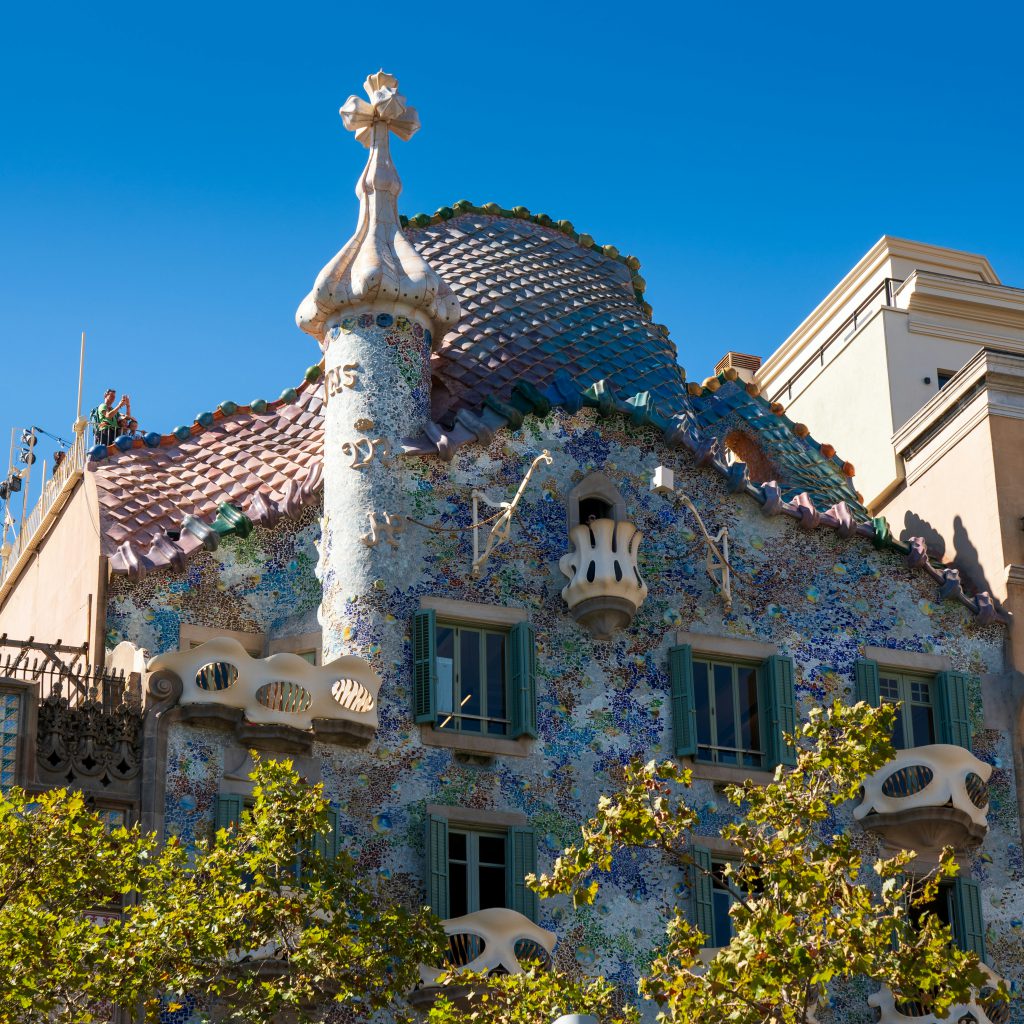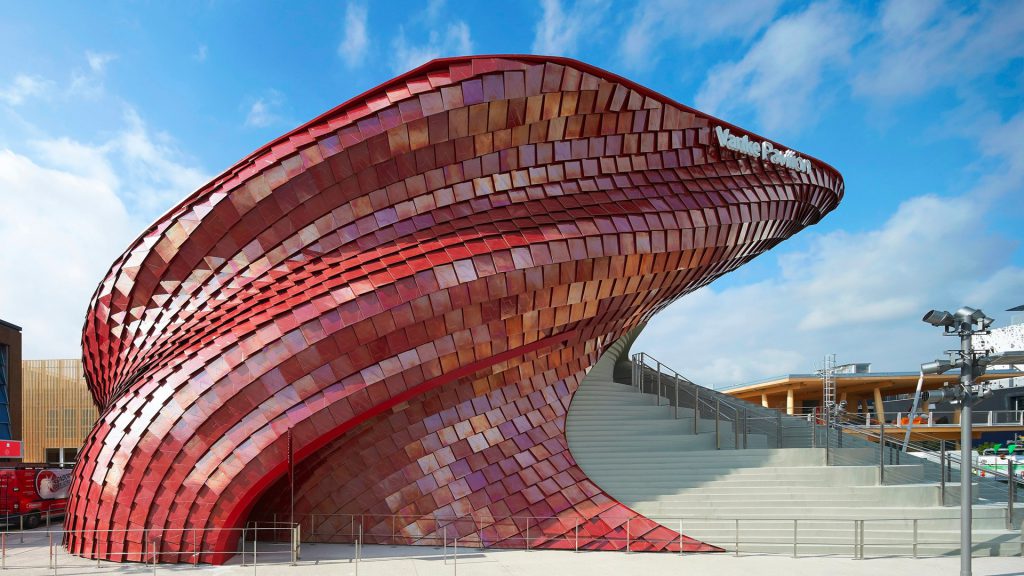Story KHUE MINH
Photos UNSPLASH, THACH DUY KHANG
The sparkling beauty of ceramics in architecture withstands the test of time.
Global architecture
Jade is one of the most beautiful treasures known to humanity. Long treasured across both East and West, it possesses a mysterious radiance that defies time. Many ancient tales speak of palaces and structures made of jade; however, in reality, jade is brittle and fragile, easily weathered and prone to lose its color due to environmental conditions. It is too delicate and far too costly to use as a building material, but people early on created a different kind of “jade” for architecture: ceramics. Through centuries of development, techniques utilizing the beauty of this innovation have inspired numerous architectural innovations worldwide.

The Vanke Pavilion in Italy, designed by architect Daniel Libeskind, is a masterpiece of creativity, covered with 4,200 red porcelain stoneware tiles that gleam brilliantly in sunlight. The tiles used in this structure represent a fusion of tradition and modern technology. Known scientifically as “crystalline ceramic,” this material features a smooth, glossy surface that effectively captures and reflects light.
The radiant surface of the structure was designed to evoke the mysterious movement of a red dragon’s scales suspended in space. Modern ceramic technology not only delivers high aesthetic value but also provides optimal temperature control for the interior space, while demonstrating excellent resistance to weather damage.
Another prominent example of ceramic tiles is Casa Batlló, located in the center of Barcelona, Spain. Originally built in 1877, it was redesigned by legendary architect Antoni Gaudí in 1904 and has been refurbished many times since. The building’s exterior is adorned with colorful ceramic and glass pieces, resembling an enchanted garden. Gaudí employed a ceramic technique on Casa Batlló called “trencadís,” meaning “broken” in Catalan. The style uses irregular ceramic tiles, glass shards and other materials to create intricate patterns. The building’s exterior successfully captures the sparkle of natural colors, with mosaic pieces as beautiful as fairy wings, its ceramic surfaces flowing and harmonizing with the environment like a midsummer dream. The versatility of the material allowed the architect to realize complex shapes from curves to subtle waves. The ceramics on the building successfully express nature’s magical light, evoking the mysterious sensation of legendary gems.

Vietnamese beauty
The art of ceramic and glass mosaic during the Nguyen Dynasty reached its peak in Hue, marked by many magnificent and artistic royal structures. Notable examples include Kien Trung Palace, Khai Dinh Tomb, An Dinh Palace and Thai Binh Pavilion.
The recent reconstruction of Kien Trung Palace is considered a significant achievement in reviving a lost structure and continuing the royal ceramic mosaic technique. The decorative details, from reliefs to vivid patterns, are created from multicolored ceramic and glass pieces, demonstrating exquisite skill by the artisans who arranged small fragments into mythical creatures, flowers, leaves and ancient religious symbols. Meanwhile, Khai Dinh Tomb, also known as Ung Lang, has long been an impressive masterpiece of grandeur, a resting place befitting an emperor. The interior rooms here have impressed many international scholars through their intricate craftsmanship and creativity, particularly in the powerful dragon and sun motifs masterfully executed in ceramic fragments.

The restoration of Kien Trung Palace and the preservation of ceramic beauty at Ung Lang not only recreate a piece of history but also pave the way for preserving the Nguyen Dynasty’s royal mosaic techniques, affirming the value of this tradition in today’s heritage conservation context. While the excellent ceramic mosaic techniques in architectural structures once reached great heights in the past, they have largely faded into obscurity. However, the untapped potential of these techniques awaits future generations to incorporate them into contemporary architecture.










